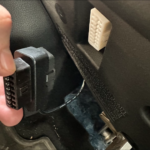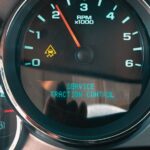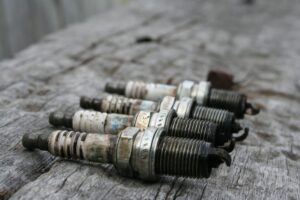Vehicles are complex machines that consist of numerous parts that work together to provide a comfortable and safe driving experience.
One of the most important components of a car is the temperature control system.
This system is responsible for regulating the temperature inside the car, ensuring that the driver and passengers are comfortable, regardless of the weather outside.
However, sometimes the temperature control system can malfunction, leading to an annoying noise in the dash. This noise can be distracting and make driving uncomfortable.
It can also be an indication of a more serious issue with the temperature control system.
In this article, we will explore the causes of noise in the dash related to temperature control and what you can do to fix it.
We will also provide some tips on how to prevent this issue from occurring in the future.
Understanding Dashboard Noises

Dashboard noises can be a cause for concern for many car owners. These noises can range from clicking to buzzing sounds, and they can be indicative of a problem with the car’s temperature control system.
Understanding the common noises that can be heard from the dashboard, as well as the sources and components that produce them, can help car owners identify and address issues with their car’s temperature control system.
Identifying Common Noises
One of the most common noises that can be heard from the dashboard is a clicking sound. This sound is often associated with the temperature control system and can be caused by a faulty fan or loose wiring.
Another common noise is a buzzing sound, which can also be caused by a faulty fan or loose wiring. Car owners may also hear strange noises like rattling or knocking sounds, which can be indicative of a more serious problem with the car’s temperature control system.
Noise Sources and Components
The dashboard is home to several components that can produce noise when there is a problem with the car’s temperature control system. These components include the vents, the front of the car, and the dashboard itself. The temperature control system, which includes the thermostat and the coolant system, can also be a source of noise when there is a problem.
Car owners should be aware of the different components and sources that can produce noise in the dashboard. By understanding the common noises and their sources, car owners can better identify and address issues with their car’s temperature control system.
Temperature Control System Overview

Temperature control systems are an essential part of a vehicle’s HVAC system. These systems are responsible for regulating the temperature of the air that is circulated inside the car’s cabin. The temperature control system consists of various components that work together to maintain a comfortable temperature inside the car.
Components of Temperature Control
The main components of a temperature control system include the temperature control panel, actuator, blend door, heater core, and air conditioner. The temperature control panel is the interface that allows the driver or passengers to adjust the temperature of the air that is circulated inside the car.
The actuator is responsible for moving the blend door, which controls the amount of hot or cold air that is mixed and circulated inside the car. The heater core is a small radiator that uses hot engine coolant to heat the air that is circulated inside the car, while the air conditioner uses a refrigerant to cool the air that is circulated inside the car.
How Temperature Control Systems Work
Temperature control systems work by receiving input from the temperature control panel and using the actuator and blend door to adjust the amount of hot or cold air that is mixed and circulated inside the car.
When the temperature control panel is set to a specific temperature, the actuator moves the blend door to allow hot or cold air to mix and circulate inside the car until the desired temperature is reached.
Diagnosing Noise Issues
When it comes to diagnosing noise issues related to temperature control, there are some basic troubleshooting steps that can be taken. Additionally, there are tools and techniques that can be used to help pinpoint the source of the problem.
Troubleshooting Steps
The first step in diagnosing a noise issue is to identify when the noise occurs. Does it happen when the temperature is being adjusted or when the air conditioner or heater is turned on? Once the timing of the noise is established, the next step is to try and locate the source of the noise.
One common cause of noise in the dash related to temperature control is a problem with the blend door actuator. This component controls the flow of air through the heating and cooling system and can become stuck or fail over time. If the noise is coming from the blend door actuator, it may be necessary to replace the component.
Another possible cause of noise in the dash is a problem with the blower motor. This component is responsible for pushing air through the heating and cooling system and can become noisy if it is worn or damaged. In some cases, the blower motor may need to be replaced to resolve the issue.
Tools and Techniques
When trying to diagnose a noise issue related to temperature control, there are a few tools and techniques that can be helpful. One useful tool is a stethoscope, which can be used to listen for noises in hard-to-reach areas. Another useful technique is to use a smoke machine to locate air leaks in the heating and cooling system.
In addition to these tools and techniques, it can be helpful to consult a repair manual or seek advice from a professional mechanic. DIY repairs can be challenging, and it is important to have a clear understanding of the problem before attempting any repairs.
Overall, diagnosing noise issues related to temperature control requires a systematic approach and a good understanding of how the heating and cooling system works. By following the troubleshooting steps and using the right tools and techniques, it is possible to identify and resolve the source of the noise.
Common Repairs and Solutions

Replacing Faulty Components
One common repair for noise in dash related to temperature control is replacing faulty components. The blend door actuator is a common culprit. This component controls the flow of air through the vents and can make a clicking or buzzing noise when it is malfunctioning.
Replacing the blend door actuator can be a DIY repair, but it can also be a complicated process that requires removing the dashboard. If the motor mount is loose or broken, it can also cause noise in the dash. In this case, replacing the motor mount is a necessary repair.
Another component that can cause noise in the dash is a faulty relay. Relays are responsible for turning on and off various electrical components in the vehicle. If a relay is malfunctioning, it can cause a clicking noise in the dash. Replacing the relay is a relatively easy DIY repair that can be done with basic tools.
Professional vs. DIY Repairs
In some cases, noise in the dash related to temperature control may require professional repairs. If the battery is the cause of the noise, it may be due to a loose or corroded connection. A professional mechanic can test the battery and connections to determine if they need to be replaced.
Similarly, if a new actuator needs to be installed, it may require specialized tools and knowledge that only a professional mechanic has.
When deciding whether to do a repair yourself or take it to a professional, it is important to consider the complexity of the repair and your level of experience. DIY repairs can save money, but they can also lead to further damage if not done correctly. Professional repairs may be more expensive, but they come with a guarantee of quality workmanship.
Overall, noise in dash related to temperature control can be a frustrating problem to deal with. By understanding the common causes and solutions, car owners can take the necessary steps to repair their vehicle and restore peace and quiet to their driving experience.
Preventative Measures and Maintenance
To prevent noise in the dash related to temperature control, regular maintenance is crucial. A dirty air filter can cause the blower motor to work harder, leading to more noise. Therefore, it is recommended to replace the air filter regularly to ensure proper airflow.
Ducts can also be a common source of noise. Over time, they can become loose or damaged, causing air leaks that result in noise. Inspecting the ducts for any damage and repairing or replacing them as needed can help prevent noise in the dash.
Regular engine maintenance is also important to prevent noise in the dash. A poorly maintained engine can cause the blower motor to work harder, leading to more noise. Regular oil changes, tune-ups, and other engine maintenance can help prevent this.
In addition to regular maintenance, there are a few other preventative measures that can be taken. For example, parking in a garage or under a carport can protect the car from extreme temperatures, which can cause the dash to expand and contract, leading to noise. Additionally, using a sunshade can help protect the dashboard from the sun’s heat.
Final Thoughts
In conclusion, if you are experiencing a clicking or rattling noise in your car’s dashboard related to temperature control, it is important to address the issue promptly. Ignoring the problem can lead to further damage and potentially costly repairs down the line.
As discussed earlier, the most common cause of this type of noise is a faulty temperature control system. This can be due to a malfunctioning thermostat, a failing blend door actuator, or a damaged air mix control servomotor. It is important to have a professional diagnose and repair the issue to ensure proper functioning of your car’s climate control system.
Regular maintenance and inspection of your car’s climate control system can help prevent issues from arising in the first place. This includes checking the coolant levels, replacing worn out parts, and cleaning the air conditioning system.
Overall, it is important to take any unusual noises in your car seriously and have them addressed promptly by a qualified professional. Doing so can help ensure the longevity and proper functioning of your vehicle.

![Best Dash Cam [Top 12 Dash Cams for Car or Truck] best dash cam](https://roadsumo.com/wp-content/uploads/2021/07/best-dash-cam-150x150.jpg)






![Read more about the article Car AC Blowing Hot Air Suddenly [How to Fix]](https://roadsumo.com/wp-content/uploads/2021/02/car-AC-blowing-hot-air-300x200.jpg)
![Read more about the article Charge Pipe [What Is It and Why Use It?]](https://roadsumo.com/wp-content/uploads/2021/06/charge-pipe-300x200.jpg)